10 Surprising Benefits Of Kerala Ayurvedic Oil Massage
In Ayurveda, great importance is given to Ayurvedic massage, and its daily practice is recommended. It is advisable to be done daily in the same way we eat, bathe, and sleep daily. It should be done daily so that the elimination of waste materials is removed from our bodies.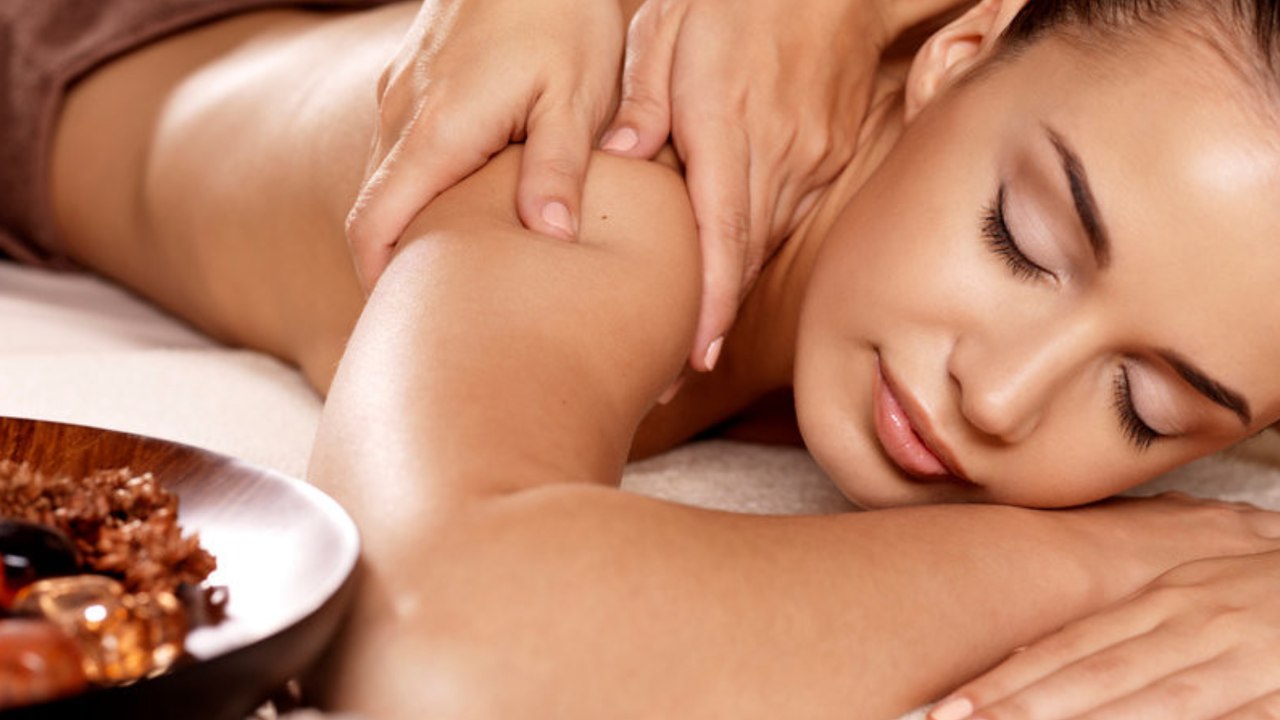
According to Ayurveda, the pains are caused by an obstruction of the flow of air (Vayu) through the vessels (siras), which transport it. When the body is rubbed or massaged the heat is generated, this causes the air of the body to expand and move.
The circulation of Vayu through the siras relieves tensions and reduces pain. Besides this, it also provides a deeper and more natural breathing pattern.
1. It Eliminates Aging (Jarahar)
In Ayurveda, the term “jarahar” refers to practices that combat aging. Massage is a key component of this approach. According to Ayurvedic principles, massage works on nourishing the body’s seven fundamental tissues or dhatus:
- Rasa (Fluids, Hormones, Lymph): This includes the essential fluids and hormones that sustain various bodily functions.
- Rakta (Blood): Blood circulation is crucial for delivering nutrients and oxygen to tissues.
- Mansa (Muscle, Meat, Skin): This dhatu involves the muscle and skin tissues that provide structure and support.
- Medha (Fat): Fat plays a role in protecting organs and providing energy.
- Asthi (Bones and Teeth): Bones and teeth are vital for structural integrity and function.
- Majja (Marrow): Bone marrow is involved in producing blood cells.
- Shukra (Semen): This dhatu is related to reproductive health and vitality.
Massage in Ayurveda involves techniques like rubbing, compressing, and pressing the muscles and pressure points. These methods are believed to enhance the circulation of blood, lymph, and hormones, thereby improving overall health.
The increased circulation and stimulation help strengthen the nervous and immune systems and contribute to delaying the aging process.
2. It Eliminates Fatigue (Shramhar)
In Ayurveda, Shramhar refers to methods for eliminating fatigue. Here’s a detailed approach to addressing both mental and physical fatigue using Ayurvedic practices:
1. Mental Fatigue:
- Shiro-Abhyanga Massage: For mental fatigue, Shiro-Abhyanga, or head massage, is recommended. Applying aromatic sandalwood oil to the head helps to calm the mind and relieve stress by removing excess heat. Sandalwood’s soothing properties also aid in mental relaxation and rejuvenation.
2. Physical Fatigue:
- Warm Salt Water Soak: If fatigue results from physical exertion, soaking the affected muscles in warm salt water can be very effective. The warmth and salt help relax the muscles and reduce soreness.
- Compression Massage: After soaking, use a compression massage to further alleviate muscle fatigue. The pressure helps increase blood flow and reduces muscle tension.
3. Shoulders and Waist Fatigue:
- Salty Hot Water Towel Compress: For fatigue in the shoulders and waist, soak a towel in hot, salty water and apply it to the affected areas. This compress helps relax the muscles through its heat and salt content.
- Massage Techniques: Compressing, rubbing, and gently tapping the muscles helps relieve tension and fatigue in these areas.
4. Fatigue from Toxin Accumulation:
- Heat-Generating Oil: To address fatigue caused by toxin buildup, use a heat-generating oil. This type of oil stimulates the sweat glands, promoting perspiration and helping the body eliminate toxins through sweating. This process supports detoxification and reduces overall fatigue.
Summary of Treatments for Eliminating Fatigue:
- Mental Fatigue: Perform Shiro-Abhyanga with aromatic sandalwood oil to relieve stress and mental strain.
- Physical Muscle Fatigue: Soak in warm salt water, then follow with a compression massage.
- Shoulders and Waist Fatigue: Apply a towel soaked in hot, salty water and use massage techniques to relieve tension.
- Toxin-Induced Fatigue: Use heat-generating oil to stimulate sweating and support detoxification.
These Ayurvedic methods provide a comprehensive approach to tackling fatigue by addressing both physical and mental causes, promoting relaxation, and aiding in the removal of toxins from the body.
3. It Removes Excess Air (Vatahar)
In Ayurveda, Vata is one of the three doshas or fundamental energies in the body. When Vata is out of balance, it can lead to various issues, including pain in muscles and joints. Here’s a breakdown of how excess Vata, or Vata dosha, affects the body and how to manage it:
Causes of Excess Vata (Vatahar):
Excess Vata can be caused by a variety of factors, including:
- Emotional Factors: Stress, anxiety, and nervousness.
- Dietary Habits: Overeating, consuming foods that have been stored for too long, or eating incompatible foods (e.g., having sexual indulgence immediately after eating).
- Lifestyle Factors: Lack of regular sleep, fasting, or suppressing natural urges.
- Environmental Factors: Exposure to cold or windy environments.
- Other Factors: Excessive talking, extreme use of spicy or astringent foods, and excessive physical exertion.
Symptoms of Excess Vata:
- Pain in muscles and joints
- Dryness in the body
- Cracking joints
- Constipation
- Anxiety and restlessness
Common Vata-Related Conditions:
- Rheumatism: Inflammation and pain in the muscles and joints.
- Sciatica: Pain that radiates along the path of the sciatic nerve, which runs down one or both legs.
Ayurvedic Solutions for Balancing Vata:
- Colon Therapy: Purification techniques, such as enemas or colon cleansing with water, can help balance excess Vata by cleansing the colon, where Vata-related issues often manifest.
- Abhyanga Massage: A type of Ayurvedic massage using warm, soothing oils helps to balance Vata. The massage involves long, smooth strokes and is designed to calm the nervous system, improve circulation, and alleviate pain.
- Warm and Nourishing Diet: Include warm, moist, and oily foods in your diet. Avoid excessive consumption of cold, dry, or raw foods.
- Regular Routine: Establish a regular daily routine that includes consistent sleep patterns and meal times. Avoid suppressing natural urges and manage stress effectively.
- Herbal Remedies: Certain herbs and spices, such as ginger, turmeric, and ashwagandha, can help balance Vata and reduce its effects.
Balancing Vata involves a holistic approach that includes dietary changes, lifestyle adjustments, and specific treatments like Abhyanga massage and colon therapy.
4. It Improves Sight (Drishti Prasadkar)
In Ayurveda, maintaining and improving eyesight involves several practices that focus on balancing the body’s elements and enhancing the health of the eyes. Here’s a detailed look at these practices:
1. Massage for Eye Health (Drishti Prasadkar):
- Navel Massage: The eyes are considered to be governed by the fire element in Ayurveda. Massaging the area around the navel in a clockwise direction with coconut or sesame oil (depending on your constitution) helps balance the fire element and supports eye health.
- Foot Massage: Massaging the feet, especially the area between the big toe and the adjacent toe, before bedtime can also benefit eyesight. This practice is believed to stimulate energy channels connected to the eyes.
2. Shiro-Abhyanga Massage:
- Regular Oil Massage: Receiving a Shiro-Abhyanga massage with warm, therapeutic oils (like sesame or coconut oil) is highly recommended. This massage focuses on the head, including the eyes, and helps improve overall eye health by soothing and rejuvenating the area.
3. Eye Purification Techniques:
- Application of Surma (Kajal): Applying Surma (kajal) or kohl is a traditional practice in Ayurveda. It is believed to have cooling properties and helps in purifying and strengthening the eyes.
- Ghee, Honey, and Onion Juices: Applying a small amount of ghee (clarified butter), honey, or onion juice to the eyes can purify and rejuvenate them. These substances have natural properties that are said to benefit eye health.
4. Tratak (Eye Exercise):
- Tratak Practice: Tratak involves staring at a flame or a fixed point until your eyes water. This practice helps improve concentration, strengthens the eye muscles, and enhances overall vision. It also stimulates the tear ducts, which helps cleanse the eyes.
Summary of Practices for Improving Sight:
- Massage the navel in a clockwise direction with suitable oils.
- Massage the feet (especially the area between the big toe and the next toe) before bed.
- Receive regular Shiro-Abhyanga massages with therapeutic oils.
- Apply traditional eye remedies like Surma, ghee, honey, or onion juice.
- Practice Tratak to strengthen eye muscles and improve focus.
These practices, rooted in Ayurvedic principles, aim to support and enhance eye health by balancing the elements, stimulating circulation, and nurturing the eyes through traditional methods.
5. It Strengthens the Body (Pushikar)
6. It Increases Longevity (Ayuskar)
7. It Induces Sleep and Dreams (Swapnakar)
8. It Strengthens the Skin (Twakdridhkar)
n Ayurveda, Twakdridhkar refers to practices that enhance the strength and health of the skin. Regular massage and oil application play a crucial role in maintaining skin health and addressing various skin conditions. Here’s how these practices work:
How Massage Strengthens the Skin (Twakdridhkar)
1. Regular Application of Oil:
- Nourishment: Applying oil regularly helps to nourish the skin, making it supple and resilient. Oils like sesame, coconut, or almond are often used for their hydrating and soothing properties.
- Eliminates Dryness: Oils combat dryness by providing essential moisture and nutrients. This is particularly important for individuals with a Vata constitution, who tend to have dry and rough skin.
2.Addressing Different Prakritis:
- Vata Prakriti: People with a Vata constitution typically have dry and rough skin due to the predominance of the air element. Regular oil massage is essential for these individuals to counteract dryness and maintain skin health.
- Pitta and Kapha Prakritis: Those with Pitta or Kapha constitutions usually have naturally oily skin. However, they may experience disturbances in the air element (Vata) or dryness due to seasonal changes or other factors. For them, massage helps in balancing these disturbances and maintaining skin hydration.
3. Balancing Doshas:
- Vata Dosha: The application of oil helps to counteract the dry and rough nature associated with Vata imbalance, making the skin smoother and more elastic.
- Pitta and Kapha Doshas: Even though these doshas have inherently different skin types, oil massage can help balance out any imbalances or disturbances that may cause dryness or irritation.
4. Additional Benefits:
- Improved Circulation: Massage stimulates blood flow to the skin, which enhances nutrient delivery and promotes a healthy complexion.
- Enhanced Elasticity: Regular oil application and massage improve skin elasticity, making it more resilient to external factors.
Summary of Benefits for Skin Strengthening:
- Nourishes and Hydrates: Regular oil application combats dryness and keeps the skin moisturized.
- Improves Texture: Massage helps to smooth and soften the skin, addressing roughness and dryness.
- Balances Doshas: Oil massage is tailored to address imbalances in Vata, Pitta, or Kapha, depending on individual needs.
- Enhances Circulation and Elasticity: Promotes healthy blood flow and improves skin elasticity.
Incorporating regular oil massage into your skincare routine can significantly strengthen the skin, enhance its texture, and maintain overall skin health. This practice is especially beneficial for balancing the effects of Vata dosha and addressing skin dryness.
9. It Enhances Digestion (Agnikarak)
Massage is not only a relaxing practice but also an effective method for improving digestive health. In Ayurveda, it is believed that massage can enhance digestion and alleviate digestive disorders through various mechanisms.
How Massage Enhances Digestion:
1. Stimulates Digestive Fire (Agni):
- Increased Blood Flow: Applying massage, especially to the abdominal area, promotes better circulation in the digestive organs. Enhanced blood flow stimulates the digestive fire (Agni), which is essential for effective digestion and nutrient absorption.
- Supports Digestive Processes: By boosting Agni, massage improves the efficiency of digestive processes, leading to more effective breakdown and absorption of nutrients from food.
2. Reduces Digestive Disorders:
- Alleviation of Common Issues: Regular abdominal massage can help relieve symptoms of common digestive issues such as bloating, constipation, and gas. Techniques like clockwise abdominal massage help stimulate peristalsis (the natural wave-like movement of the intestines), which facilitates the elimination of waste.
- Promotes Healthy Bowel Movements: The gentle, rhythmic pressure applied during abdominal massage encourages regular bowel movements and contributes to overall digestive comfort.
3. Regular Application of Oil:
1. Nourishes and Soothes:
- Hydrates the Abdomen: Applying warm oil to the abdominal area during massage helps to hydrate and soothe the digestive organs. This nourishment supports healthy digestion and reduces discomfort.
- Enhances Absorption: The use of oils like sesame or coconut can enhance the absorption of nutrients by promoting a relaxed state in the digestive tract.
4. Addressing Different Prakritis:
1.Vata Prakriti:
- Combats Dryness: Individuals with a Vata constitution, who often have dry and irregular digestion, benefit greatly from abdominal massage. Regular massage helps to combat dryness and improve digestive regularity.
2. Pitta and Kapha Prakritis:
- Balances Excess: For those with Pitta or Kapha constitutions, massage can address imbalances that lead to digestive disturbances. It helps balance excess heat (Pitta) or mucus (Kapha), contributing to better digestive health.
Additional Benefits:
1. Improves Nutrient Absorption:
- Enhanced Digestion: By stimulating Agni and improving digestive efficiency, massage aids in better absorption of nutrients, leading to improved overall health.
2. Reduces Stress Impact:
- Stress Relief: Regular abdominal massage helps reduce stress, which can negatively impact digestion. A relaxed mind and body contribute to a more effective digestive process and reduce symptoms of digestive disorders.


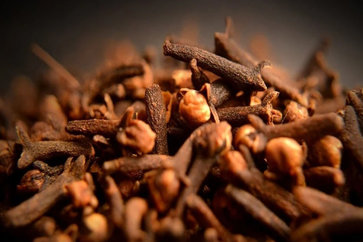
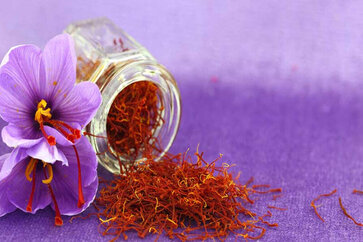



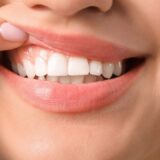
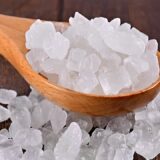
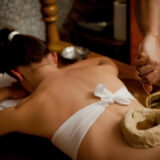


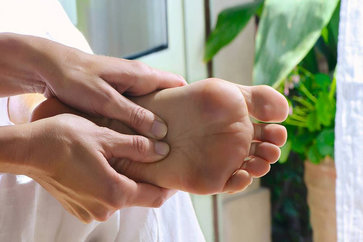













Thanks for the lovely information. Great blog. Nice ……
In your opinion how long will it take to complete a full body massage, some people offer a massage less than one hour. is it fair to finish it within an hour.